All About Bulldogs
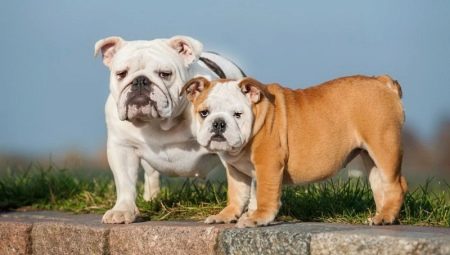
Since ancient times, bulldogs have been considered the personification of strength, courage and a fighting character. These dogs have a long history - their distant ancestors took part in performances in the arena and fights with wild animals. Over time, dogs spread around the world, changed and acquired their national breed characteristics, but most of the bulldogs today are either on the verge of extinction or have disappeared altogether - today only three varieties of these dogs are popular: American, French and English.
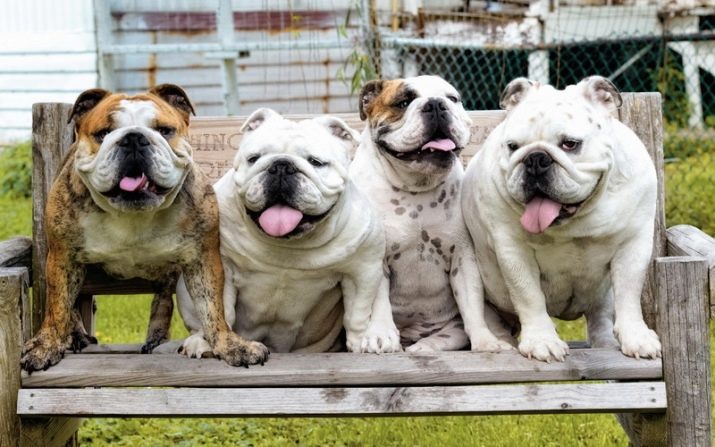
Origin of the breed
In the 17th-19th centuries, Old English Bulldogs were very popular among the royals on the territory of Great Britain - it is believed that they appeared as a result of mixing of the Central Asian mastiffs and the North Caucasian Alans... In those years, dogs were bred as fighting animals, they showed high aggressiveness and cruelty. These qualities made them ideal baiters, who were allowed into the ring to fight with bulls, bears and even lions. During such battles, the weakest representatives of the bulldogs were destroyed, only evil, intelligent and strong dogs survived. During the fight, the animals used their "signature technique" - they grabbed the bull by the nose, which has always been the weakest point of these giants. As a rule, in such a situation, the animal's desire for resistance completely disappeared, it fled from the ring - at that moment the fight was considered over, and the bulldog was declared the winner.
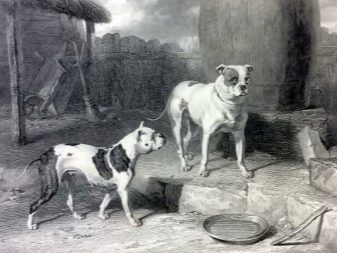
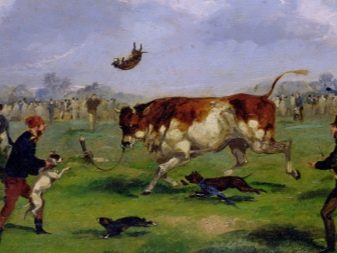
In 1835, bull-baiting was officially banned and many dogs were out of work. At the same time, animals began to mate with the largest and strongest dogs of other breeds in order to create ideal guards and protectors - all this led to the fact that there were practically no purebred bulldogs left. This situation seriously bothered the dog handlers, and in 1858 a large-scale action to preserve the breed began. However, the actions of the breeders pursued another goal - to preserve the strength and power of the dog, but at the same time to reduce its aggressiveness. To achieve this goal, the search for the calmest bulldogs began throughout England. The efforts of geneticists were crowned with success - a few years later, at an exhibition in Birmingham, a new breed of dog was presented, which outwardly looked like the Old English "meat dogs", but by its nature it was very different from them. The updated breed in 1878 was officially recognized by the world community of dog breeders, and after a few years breeders from other countries began to pay attention to the four-legged.
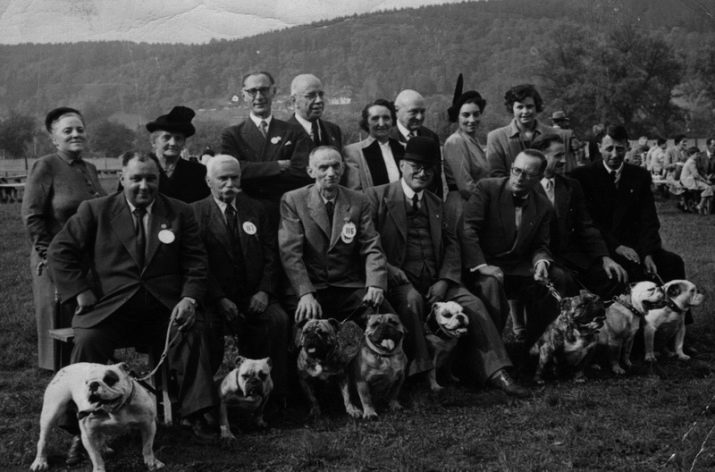
Dogs have spread quite rapidly throughout the world, which has led to the emergence of a wide variety of varieties of bulldogs. French, English and American breeders were especially active in breeding new dog breeds., very successful results have been obtained in South Africa, Australia, New Zealand and Brazil. In many countries, they even decided to create their own national breed standard, as a result, French, American, Australian and other bulldogs were introduced. Today, these animals do not have so many similarities with their English ancestors - this is not surprising, because each breed was bred for specific purposes, types and areas of use of animals.
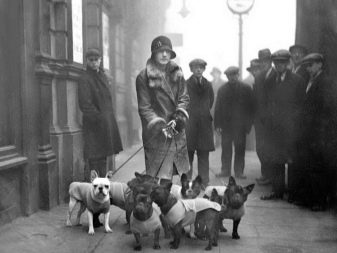
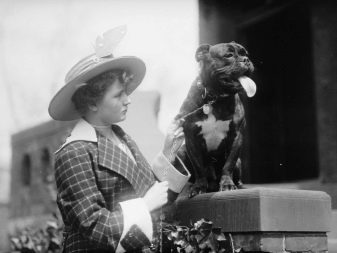
Advantages and disadvantages
Despite serious differences in temperament and conformation, representatives of all types of bulldogs have their own advantages and disadvantages. It is worth highlighting the main advantages of dogs of this breed.
- Compactness. Bulldogs are far from being giants, so they can be kept both in a large private house and in a small city apartment. The animal does not need a lot of space - a small bed in the corner is enough for him.
- Adaptability. These animals are satisfied with any conditions of detention. They quickly adapt to everything, but their favorite resting place for them will still be the master's sofa or the knees of their loved one.
- Modern bulldogs are not aggressive, but they cope with the protection of the owner perfectly. Their powerful, muscular body, a serious expression of the muzzle, loud barking, as well as a reputation stretching from ancient times, are able to scare off the vast majority of people who, in one way or another, threaten the owner or his property.
- Bully are easy to train. Usually, correcting their behavior does not cause any problems. If you pay attention to raising an animal and training from an early age, then the dog will never show aggression without a sufficient reason.
- These dogs are very loyal and devoted to their owners., but at the same time they do not suffer alone and have a great time in the absence of a person. These dogs do not bark in anticipation of the return of the breeders, and this is undoubtedly a big plus in relations with neighbors in an apartment building.
- The coat of bulldogs is short, so it does not require specialized care. You just need to comb it with the simplest brush or ordinary comb - you don't even have to buy special tools. These dogs do not need frequent bathing, as their coats do not have a specific smell, and in addition, they are not prone to accumulation of dirt, so you can achieve significant savings by not using the groomer.
- Modern bulldogs treat children very well and play with them with great pleasure. But do not forget that this is a strong dog, which may not calculate its power during the games, so communication of the bulldog with the kids is best done under the supervision of an adult owner.
- From nature, dogs are distinguished by rare ingenuity, ingenuity and curiosity. Combined with a balanced and reserved character, this makes them good companions and loyal friends.
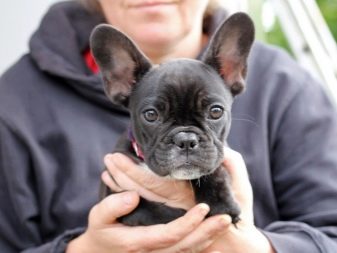
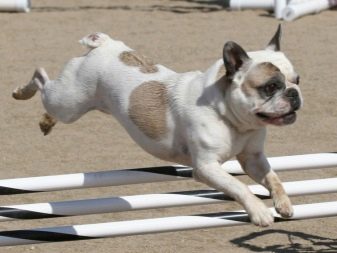

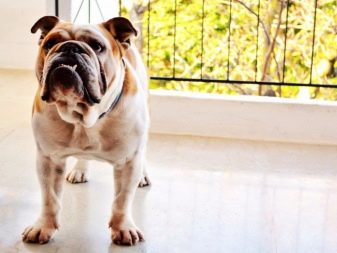
However, bulldogs also have their drawbacks.
- Small size and shortened coat often go from plus to minus. The fact is that these animals cannot stand too high and too low temperatures - any draft can lead to the development of colds, and after a walk under the scorching summer sun, the pet may well get heatstroke. That is why in winter it is necessary to walk the dog only in special clothes, and in summer to limit movement on the shady side of the road.
- A distinctive feature of Bulldogs is the folds on the muzzle. In these places, a microenvironment is created that is favorable for the reproduction of the fungus, therefore, pustules and inflammations often occur here. To avoid such troubles, it is necessary to regularly process the skin with cream and wet wipes, alternating wet and dry.
- Bulldogs have open ears, so they have to be cleaned quite often. However, representatives of the breed do not like this very much and resist in every possible way, breeders have to make a lot of efforts to rid their pet's ears of pollution.
- The specific anatomical structure of the muzzle and airways leads to the fact that in a dream, bulldogs snore and it is impossible to muffle this sound, no matter how the owners tried. It is difficult for these animals to breathe through the nose, so they swallow air with their mouths - there is too much of it, bulldogs get rid of excess in a completely non-gentlemanly way - these animals are characterized by flatulence. To neutralize the emitted smell, you will have to constantly use high-quality air fresheners.
- Bulldogs are very slobbering animals, which may not please the cleanliness of the owners.
- Bulldogs more than many other breeds show allergic reactions on some food products and household chemicals.
- Bully can be very lazy and stubborn. Any training requires constant repetition of learned commands and exercises. If you let everything down to chance, the animal will simply refuse to fulfill the requirements of its owner. This breed is categorically not suitable for lazy owners.
- Bulldogs do not have a natural sense of fear. If they feel threatened, they may even engage in a fight with a large dog. The outcome of such a collision can be the most deplorable for a pet.
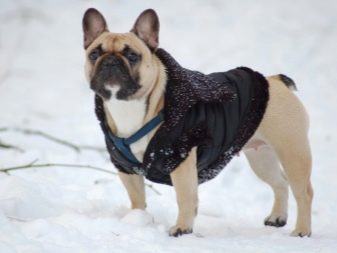


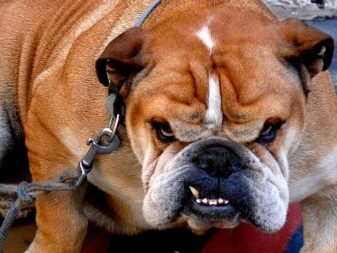
In general, there are much more pluses in this dog than minuses. Adorable bulldogs will be a great option for any, even the most inexperienced owner. For complete happiness, this animal needs very little - attention, care, loving owners and the opportunity to sleep in a warm corner.
Varieties and their characteristics
The most common bulldogs today are three varieties - English, French and American. Let us dwell in more detail on the description of these and lesser known varieties.
English
This breed, descended from direct ancestors - Old English Bulldogs, was first introduced in the UK. Dog sizes vary from 31 to 40 cm at the withers, body weight - from 22 to 25 kg. English Bulldogs are famous for their friendly, but willful character, however, with proper training, these dogs are always obedient. Dogs are most often started as companions, but they can also perform watchdog functions. English Bulldogs live for about 10-12 years, but in practice it is very rare to find animals that have crossed the 8-year age limit. Cancer and cardiovascular diseases are the main causes of morbidity in such dogs.
The color can be different - gray-brindle, brindle with white, black, red, beige or red. There is an opinion that these dogs are very lazy - they are so slow in fulfilling the commands and requirements of their owner. In fact, this is not true - the dogs simply carefully consider the order before proceeding with its implementation.
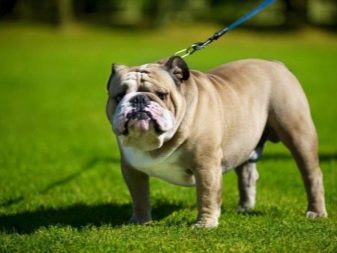
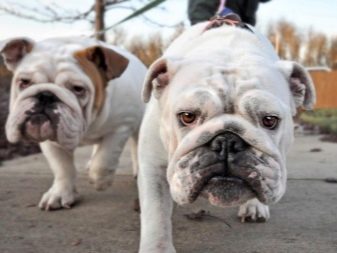
Keep in mind that the ancestors of these dogs were famous for their aggression and cruelty, so today you need to buy puppies only in proven kennels, since breeding a breed without taking into account its specifics often leads to the appearance on the market of animals with an unstable psyche.
Old english
For a long time, breeders and geneticists have been actively working to level the classically traits of the Old English dog - and their efforts have been crowned with success. but at the end of the last century, American D. Levitt managed to recreate the Old English Bulldog, using dogs of several fighting breeds... This is how the animal appeared, which has the typical "root" features of boules, and this applies not only to the appearance of the animal, but also to character traits. These dogs are currently not widely distributed, but are of interest to some categories of breeders. Height at the withers is 38–48 cm, body weight ranges from 20 to 40 kg. These are aggressive and rather fearless four-legged, which are used as guard dogs. The colors can be monochromatic and spotted - fawn, variegated, white with beige spots.
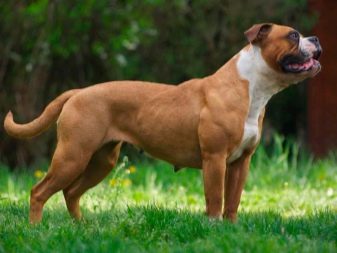
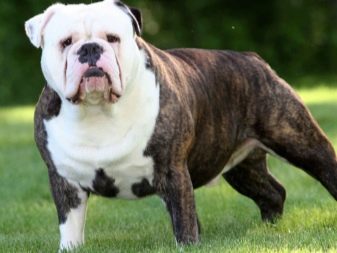
French
French Bulldogs are one of the most popular breeds in the world today. Dog breeders find themselves literally charmed by the good-natured nature of the pet and its funny appearance. This animal gets along well with children and pets, is distinguished by its loyalty to its owner and unpretentious care. The height of the body at the withers is 25–35 cm, the body weight is small - from 8 to 15 kg. Most often they are acquired as companion dogs. These animals are easy to distinguish from all other bulldogs at a very early age - they have a rather cute and funny shape of the ears, which makes them a bit like a bat. There are dwarf representatives among the French.

Important! Many dog handlers assure that it was with the French that the transformation of the aggressors into domestic "sweethearts" began. Of course, this "bat" is quite capable of emitting a formidable roar and even rushing at the offender, but nevertheless this dog prefers to doze all day surrounded by loved ones. Families with children often have such an animal.
American
The breed was first introduced to the United States. American Bulldogs are quite large dogs, whose height reaches 70 cm, and their body weight is 28–58 kg. Most often, these dogs are used as companions, but loyalty, energy and desire for domination make them excellent watchmen. The very appearance of dogs speaks of their ability to fend for themselves., and also reminds of the fighting qualities of their distant ancestors, who became famous by fighting huge bulls and wild bears. Of course, these are no longer the same dogs - they have less strength, and their character is softer, but nevertheless their body is solid cast muscles, and under a gentle gaze there is a self-confident and unyielding character. What distinguishes the American dog from other bulls is the absence of folds on the face at puppyhood - they appear as the pet grows up.
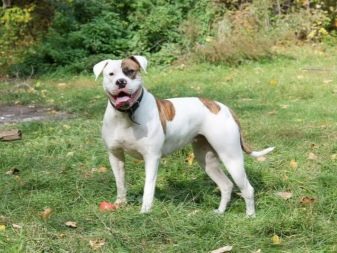
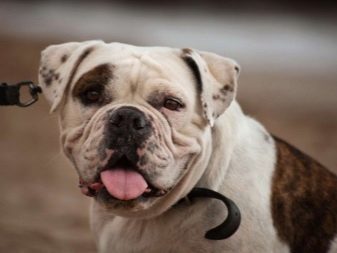
Continental
Originally from Switzerland, this endangered bulldog is the product of a cross between Old English and New English Bulldogs. Height at the withers reaches 46 cm, and body weight ranges from 22 to 30 kg. Animals are distinguished by their attentiveness and friendliness, therefore they are most often used as a companion dog. Continental boules found themselves in the position of a toddler abandoned by their parents.In the past, representatives of the FCI initiated the development of a new breed and took an active part in its formation, but later they refused to officially recognize the new variety of boules, so their continental representative would seem to be a bulldog, but at the same time not. Fortunately, this did not stop fans of the new species of pets from creating their own club.
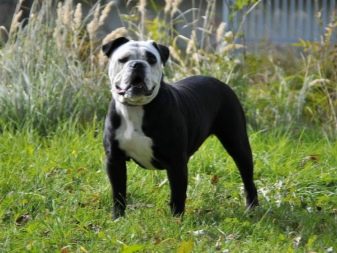
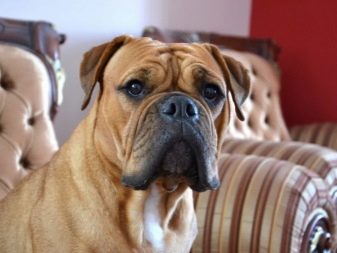
Alapakhsky
These energetic, loyal but vicious dogs are native to America. Height at the withers varies from 48 to 66 cm, body weight - from 28 to 45 kg. Alapakh is a rare breed of bulls, which is almost completely extinct these days, there are no more than 150 representatives of breeds in the world. Despite their typically American appearance, these dogs originate from the Old English bulls. Despite the fact that outwardly these dogs look calm and balanced, nevertheless they are powerful and very aggressive four-legged, they can be kept exclusively behind a fence, and walked in a muzzle and on a leash.
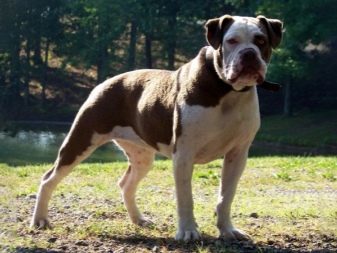
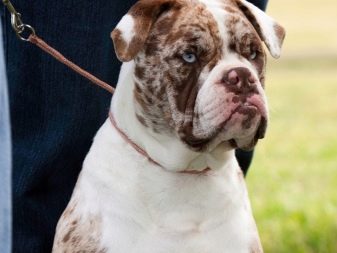
Alano
These are Spanish boules, which grow up to 58 cm, while their body weight reaches 40 kg. Loyal, loyal and calm dogs, which are most often used as companions, less often as watchdogs. Alano is a very large dog with a very powerful head. The ancestors of these dogs were the Alans - ideal four-legged warriors, horse guards and human guards, and it was they who gave the name to the breed. At one time, they were bred to participate in dog fights, traditional for this country. Nowadays, the Spanish boule is a smart and balanced dog, at the same time very beautiful and rare.
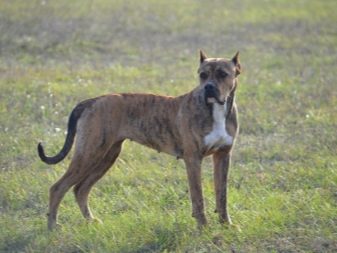
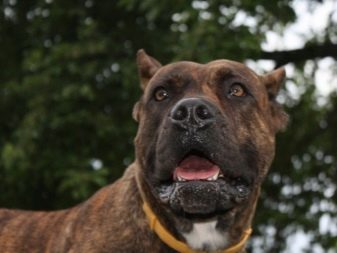
It is very difficult to acquire an Alano puppy, which explains the rather high cost of puppies.
Campeiro
This is a native of Brazil up to 58 cm tall and weighing up to 45 kg. Dogs can be used as shepherds and guards, they have a calm and pleasant disposition. The ancestors of the Campeiro were the Old English Bulldogs, which were introduced to Brazil by settlers in the 16th century, where they began to be crossed with local breeds of dogs to create the ideal herding dog. Usually these animals worked collectively and did an excellent job with livestock, which often strove to escape from the herd. A distinctive feature of the Brazilian Bull is its exceptional endurance, the dog can run for a long time without showing any signs of fatigue. The campeiro owners are treated with tremendous awe and dedication.
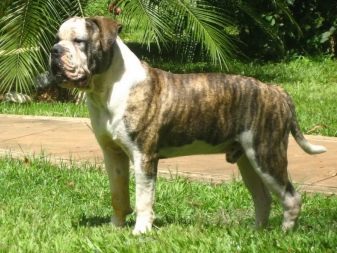
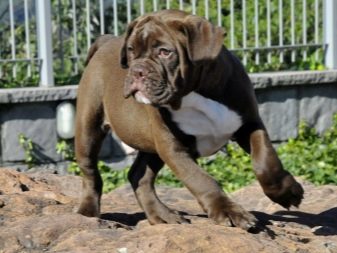
Keep in mind that such dogs cannot be kept in apartments, as, due to physiological characteristics, they require increased physical activity.
Catahoulas
Another variety of American boules are very large dogs: the height at the withers is 62–65 cm, and the mass reaches 45 cm. Catahoulas were bred near the American lake Catahula, from where they got their name. The goal of the breeders was to breed bulldogs of exceptional beauty, for this English Bulldog they crossed with a leopard dog, and the first parent was an ideal shepherd, but was unable to catch game, and the second, on the contrary, enjoyed a well-deserved reputation as an excellent catcher. The breeding work resulted in a large, aggressive dog with excellent hunting skills and very powerful jaws. A distinctive feature of these dogs is blue or amber eyes, few other representatives of the canine family can boast of such a spectacular appearance. However, outside of the United States, this breed is almost unknown.
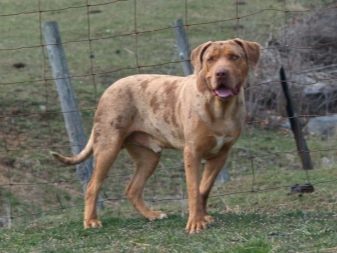

How to choose?
Before buying a bulldog puppy in the first place it is necessary to decide on the class of the animal.
- Pet class puppies. As a rule, according to their main breed characteristics, these animals must comply with officially accepted standards, but they may have one or more defects associated with the appearance of the dog and do not affect the state of his health.Usually it is the wrong color of the coat, lips or nose, insufficiently high quality coat, cryptorchidism or malocclusion. Such puppies can appear even from the most eminent parents - immediately after birth they are subject to mandatory "registration", after which a mark "not for breeding" is made in their documents. Having become the owner of such a pet, you will not be able to take part in exhibitions and competitions, your dog will not be involved in breeding new litters, but this will not prevent it from being a reliable and loyal friend, a good guard and a smart companion.
- Breed class puppies. These animals meet all breed characteristics and do not have any defects, therefore they can take part in breeding. Usually this category includes males and females that receive marks "good" and "excellent" at shows.
- Show class puppies. These are the best representatives of the bulldogs, which are distinguished by the most excellent breed characteristics in the exterior. Such pets invariably become the pride of their breeders, they are recognized as winners of exhibitions of various levels and therefore deservedly belong to the elite of the breed.
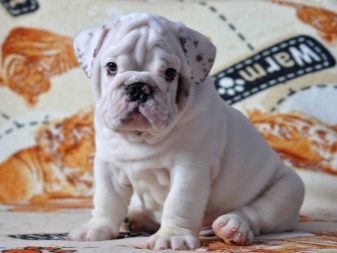
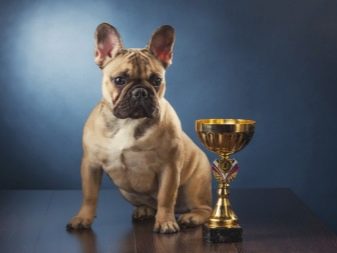
Important! Keep in mind that it is quite difficult to assess the class of a puppy correctly at a very early age - some basic parameters can make themselves felt already at an older age of a four-legged friend.
You should decide in advance on the sex of the selected dog. Usually, male bulldogs are larger and more powerful than females, so they always look more advantageous at exhibitions. The advantages of a male dog should also include the absence of leaks, and, consequently, the problems that invariably accompany pregnancy and childbirth of an animal. However, males have drawbacks - they often and very abundantly mark their territory, often run away from their owners during a walk if they notice a bitch in heat, and in addition, upon seeing a potential rival, they can show unexpected aggression. Bitches are more attached to their masters, females are more amenable to training and education, and also never strive to dominate, therefore they easily get along with other pets. At the same time, they give their owners a lot of trouble during estrus, as well as in the process of carrying puppies, childbirth and subsequent feeding.
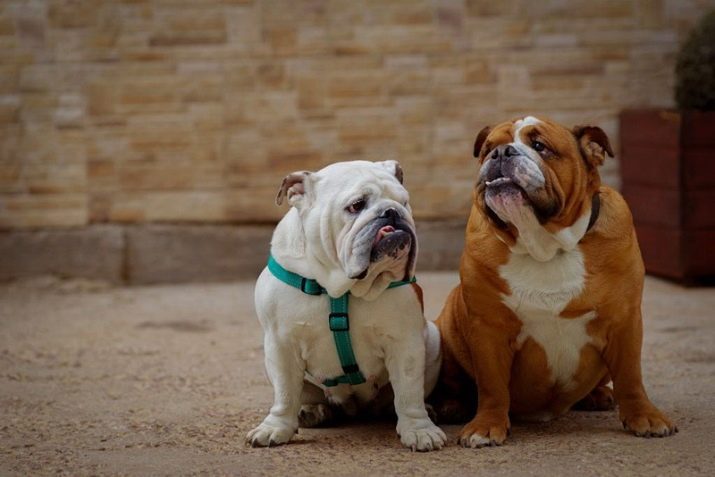
An important criterion is the age of the purchased pet. Puppies up to one and a half months are cheaper, since the breeder has not yet incurred significant costs for feeding and maintaining it. But at this age, the animal is confirmed by many diseases, in addition, it is not sufficiently socialized. If you have experience with dogs, you can buy a bull at the age of 1.5–3 months, if you are an inexperienced breeder, it is better to take a dog older than 3 months. Experienced dog breeders prefer to take a half-year-old bulldog - at this time it is already possible to fully appreciate the animal's exterior and features of its character.
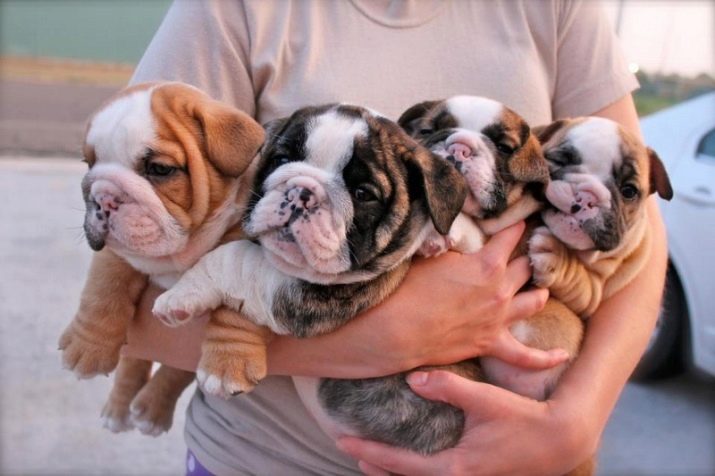
But the choice must be made extremely carefully, since by this time most of the good puppies from the litter have already been dismantled and are far from the best quality, it is possible that the breeders hold such a dog for one reason or another - they must be found out.
And of course, you should choose only a healthy puppy that is free from any hereditary diseases. Therefore, when choosing a pet, you should pay attention to such pet parameters as:
- the presence of a shiny and smooth coat;
- the presence of a light fat layer on the abdomen;
- lack of inflammation and rash on the skin;
- the same coloration of the iris of the eyes;
- no swelling in the abdominal region;
- clean eyes and ears, no discharge;
- lack of unpleasant odor from the mouth;
- the mucous membrane of the mouth is light pink, but not too pale.
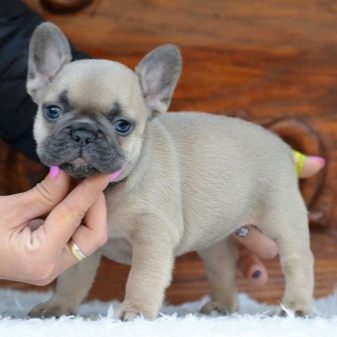

Important! The puppy you choose must be vigorous and active.
How to name?
When choosing a name for your bulldog, it is very important to choose a nickname that the owner can easily pronounce. So, for a boy, the nicknames Archie, Bike, Butler, Nick, Butch, Fred, Jack, Rudy, Oliver, Luke, Harold, Adrian, Toby, Chester, Tiberius, Olympus, Murphy, James, Tima, Diesel, Tyson, Walter, Alvin. And among girls, the most popular names are Penny, Gretta, Tiara, Miley, Elsa, Jules, Amber, Hanni, Beta, Assol, Fiona, Goldie, Sally, Doxy and others.
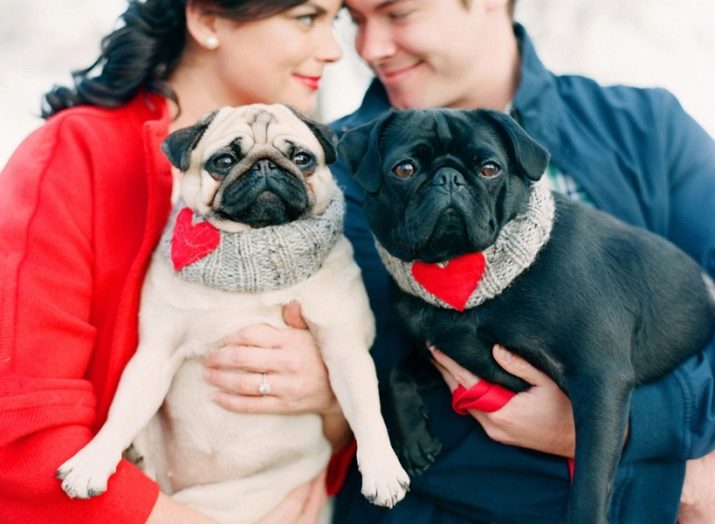
Basic rules of content
Before buying a bulldog, first of all, you need to prepare a "budar" for him, in which he can rest and feel completely safe. The requirements for the living conditions of the puppy are simple and are as follows:
- the room should be dry and light, with a minimum number of pieces of furniture;
- it is not allowed to scatter sharp metal objects on the floor and the presence of furniture with sharp edges;
- It is best to place the dog's bed in a corner; it is not allowed to place the animal near the battery and in places where a draft often occurs:
- be sure to hide all cables and electrical wires;
- try to eliminate or at least minimize any harsh noises, such as from slamming doors or operating equipment.

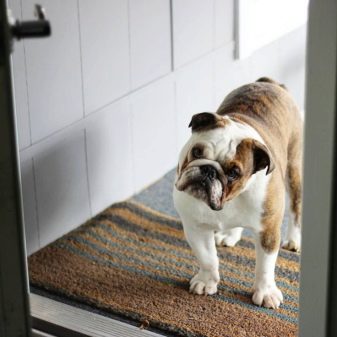
Important! The bulldog considers his bed to be an inviolable area, so you shouldn't bother the dog while resting - his reaction to such an "attempt" can be completely unpredictable.
Keep in mind that the bull will show an enviable tenacity in trying to climb onto your couch - these inclinations must be nipped in the bud, otherwise you will have to share your bed with the cheeky pet. It is very important to stock up on dog toys in advance. The fact is that the bulldog loves to "ruffle" the owner's shoes, the legs of tables and chairs, if you do not provide your pet with everything you need, then be prepared for the fact that spoiled slippers and pieces of furniture will be waiting for you every day.
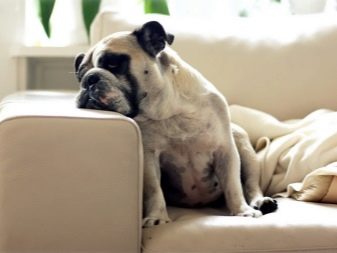
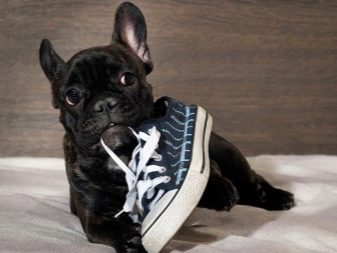
Bulldogs do not have the habit of barking over trifles, but small puppies in the first days after moving can miss their mother and whine at night - it is advisable that the owner's family members take turns calming the sufferer, then the baby very quickly adapts to the new conditions of existence.
Bully, by nature, have a predisposition to pathologies of the spine, therefore, until the dog reaches 6 months of age, he should not be allowed to run up the stairs. If you notice that your four-legged friend is tired, immediately pick him up or put him in a bag. It is better to walk bulldogs in a secluded place - the appearance in parks, squares or near playgrounds is allowed only with a muzzle and on a leash. It is allowed to walk the dog in bad weather - during rain or snow, but in order for such movements to be more pleasant and not cause colds, it is necessary to use dog overalls and special shoes. The most caring breeders also protect the ears of their pets by putting on hand-knitted or machine-knitted hats - this is not always to the liking of dogs, but it keeps their ears healthy. All bulldogs must be promptly vaccinated against the most common infections - hepatitis, plague, rabies, leptospirosis, parvovirus enteritis and adenovirus.
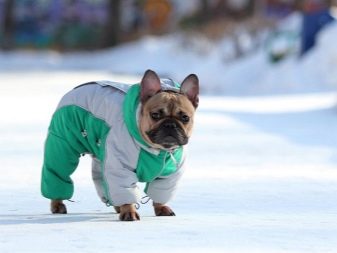
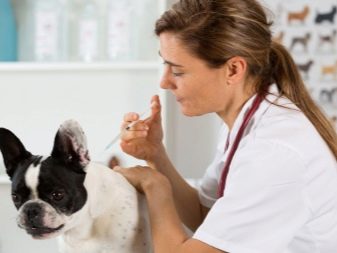
Nutrition
Any bulldog puppy must be taught to products unfamiliar to them - do not follow the pet's lead if he refuses to eat the food offered to him, and immediately try to change the contents of the bowl, otherwise this manipulator will quickly understand that the owner takes into account all his whims and will constantly demand more delicious meals. A certain area in the room is allocated for feeding. It is necessary to purchase two low cylindrical feeders in advance - one is filled with feed and the other with drinking water.

In the organization of the bulldog food system, there are the following taboos:
- it is forbidden to use glassware, since the animal can accidentally split it and get hurt;
- you cannot put a cup made of wood, since the boule is a lover of gnawing, he will certainly try it "on the tooth";
- you should not buy bowls with a spherical bottom, as the animal can easily overturn them;
- the size of the cups should correspond to the age - you should not buy a bowl "to grow", in this case the puppies begin to smear the food on the bottom and start an unpleasant habit of crawling into the cup with their feet;
- do not teach the dog to feed from the owner's hand - such a feed will simply spoil your boule;
- after feeding, immediately throw away the leftover food leftovers, do not offer your pet snacks - the animal must have strict nutritional discipline;
- the encouragement of theft and begging is not allowed.
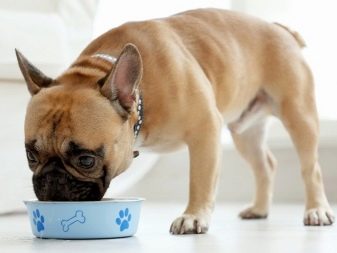

First of all, the breeder must decide for himself the type of feeding. Bulldogs can be fed dry or natural. Natural food is preferable, but in this case the owner will have to spend a lot of time buying the right products and preparing balanced meals. Dry food significantly saves the breeder's time and effort, in addition, they are enriched with vitamins and minerals, therefore, they do not require the use of special additives in the food.
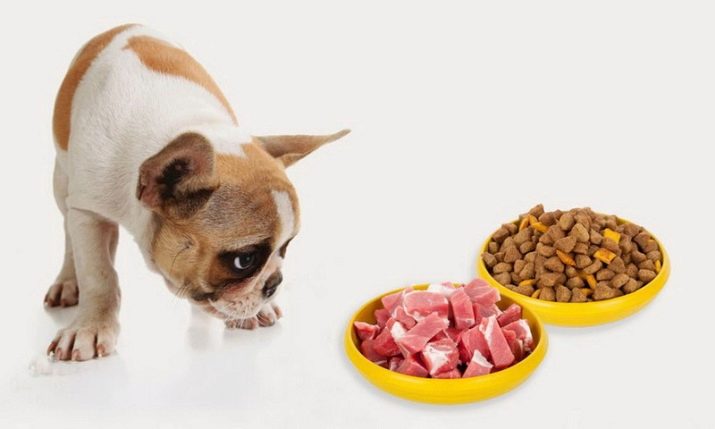
However, some bulldogs, due to anatomical features, cannot chew dry lumps, they simply swallow them, which does not have the best effect on their digestion.
The negative aspects of ready-made feeds can also be attributed to a small selection of tastes, although veterinarians unanimously assure that the vast majority of dogs, including boules, do not need variety in food, and even harmful to certain species of animals. When buying feed, preference should be given to products of at least a super-premium class; it is not worth purchasing formulations at a lower level. The fact is that boules, for the state of their health, are far from being in a high place; it is not worth aggravating the situation with low-quality nutrition. Natural feeding is considered to be more nutritious for Bulldogs. The diet of pets should be 70% meat, the remaining 30% should be the following products:
- cereals;
- eggs;
- lactic acid products;
- vegetables and unsweetened fruits;
- fresh herbs.

The amount of feed is calculated based on a ratio such as:
- puppies under 1 year old need about 59 g of natural food for each kilogram of weight;
- an adult dog consumes 250 g per day.
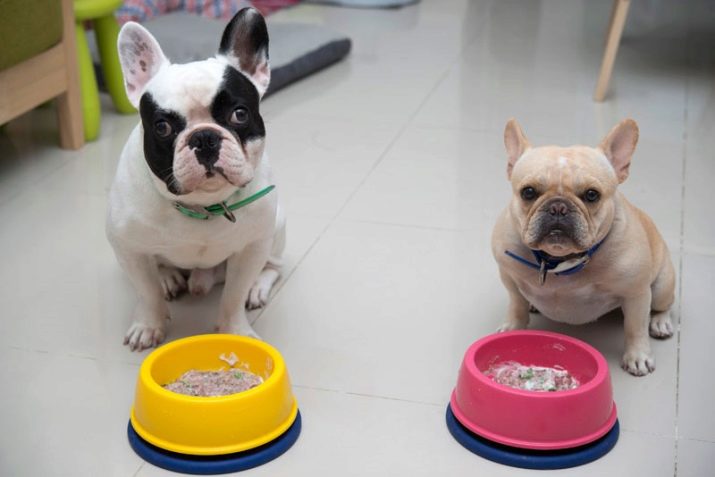
The meat must be lean - beef or veal is best. It is optimal to give the product raw, after keeping it in the freezer for several days to destroy pathogenic microflora. If your pet refuses to eat a raw product, then you can pour boiling water over the meat before serving - this will eliminate the smell of blood, but at the same time retain all the necessary micro- and macrocomponents. Twice a week, it is allowed to replace meat with high-quality offal - the liver, heart, udder and kidneys are suitable for bulldogs, it is better to include them in the mash pre-boiled.
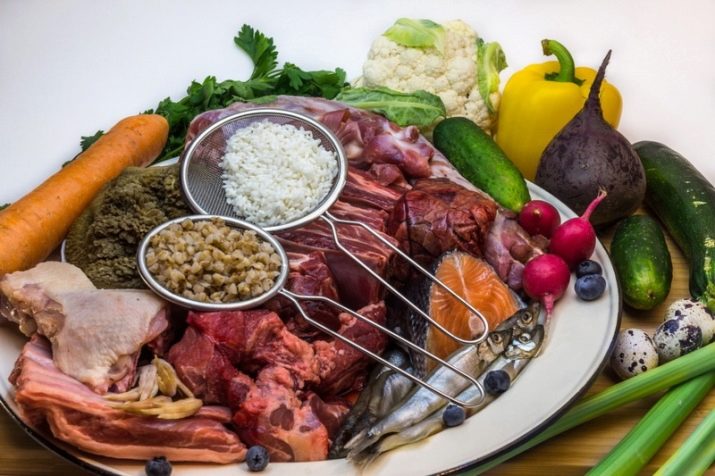
It is not recommended to give the bulldog bones, but it is not forbidden to treat your pet with cartilage from time to time. It will not be superfluous to purchase a treat from pressed veins at pet stores. - dogs chew it with great pleasure, thereby contributing to the training of the jaws and getting rid of tartar. Boil cereals are boiled in water, it is best to use rice and buckwheat, before serving, season with vegetable oil and finely chopped herbs. From early childhood, puppies should be taught to eat lactic acid products, as they have a beneficial effect on the gastrointestinal tract. Young puppies are given low-fat cottage cheese (it is best to cook it yourself), older dogs can include kefir or yogurt in their diet.

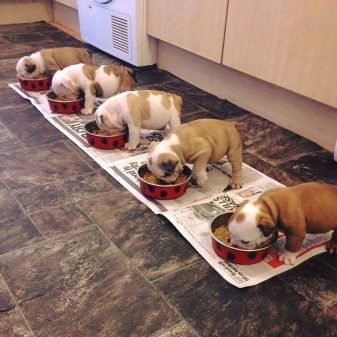
Boiled eggs should be introduced into the diet a couple of times a week. Keep in mind that a whole egg can only be given boiled.If you offer raw eggs to an animal, then only yolks should be included in the mash. Vegetables and fruits are considered an important part of the bulldog's menu, but if these fastidious dogs eat the latter with great pleasure, then there can be problems with vegetables. It is best to pre-extinguish them and add a spoonful of sour cream before serving.

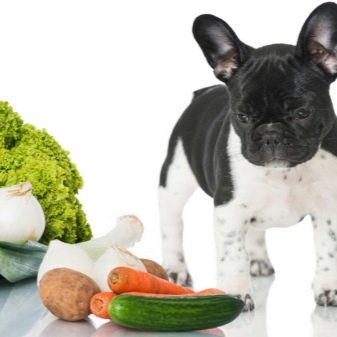
The number of feedings directly depends on the age of the dog, namely:
- babies up to 2 months old need food 6 times a day with an interval between each meal not exceeding 3 hours (night time is excluded);
- at 2–3 months, a young bul can already feed 5 times;
- from 4 to 7 months, a puppy of this breed should gradually switch to four feeding a day;
- from 8 to 12 months, babies reduce the number of meals to three;
- by the year the pet can be transferred to the adult regimen - 2 times a day, in the mornings and evenings.
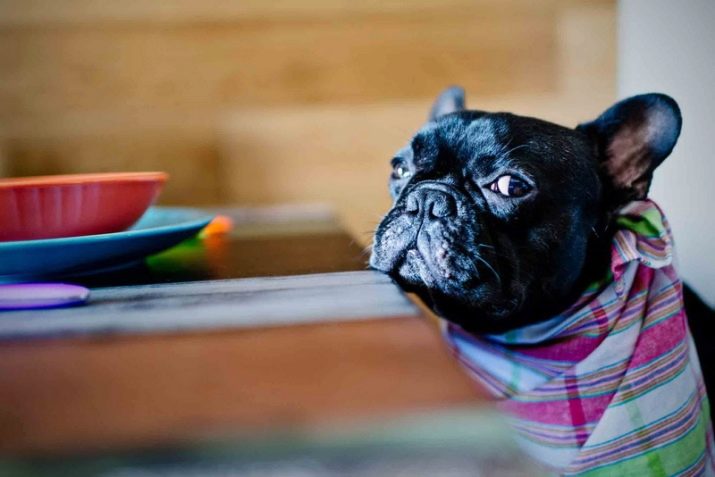
Important! Bulldogs value stability very much, so feed should be fed into the bowls by the clock.
Hygiene
Bulldogs are breeds that do not require specialized care. These animals have rather short hair, which should be brushed several times a week, and the simplest comb will do for this. During shedding, the dead hairs should be combed out more often, preferably every day. These animals are bathed 3-4 times a year as they become dirty. It is best to use specialized shampoos for dogs with sensitive skin. The rest of the time, dirt acquired during walks is removed by simple rinsing in clean water or removed with wet wipes.
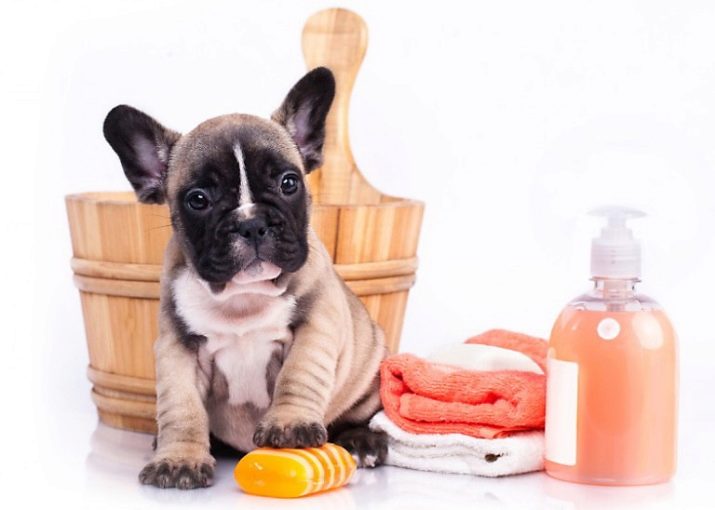
Important! Wrinkles should be given special attention. They must be cleaned of dirt and lubricated with baby oil or cream. The same manipulations should be repeated near the base of the dog's tail.
Dogs need to trim their nails once a month - this only applies to animals that walk on soft lawns. If the animal moves on a solid base, then its claws grind off by themselves. Particular attention should be paid to the ears - it is necessary to regularly clean them of sulfuric secretions., having previously dripped vegetable oil - after waiting a few minutes, the inner surface of the auricle should be wiped with a cotton pad dipped in a solution of boric acid. It is very important to keep the eyes clean - they should be without discharge, but if they appear, they are removed with a cotton swab dipped in chamomile infusion. Bulldogs have their teeth brushed at least once every 7-10 days. In caring for animals, special attention should be paid to antiparasitic treatment and deworming.
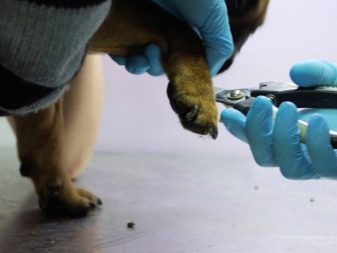

Training
As soon as the bull crosses the threshold of his new home, you must immediately let him know which of you is in charge in the house and whose instructions he will have to obey. In order for the puppy to correctly interpret your actions, no more than 15 seconds should pass between the unwanted offense and your reaction to it, otherwise the animal simply does not realize its offense. Bulls are encouraged for good behavior. - they praise and give a treat, and for a bad one - they raise their voice (however, it is not recommended to go to shout too). Keep in mind that you need to praise your pet much more often than scold.
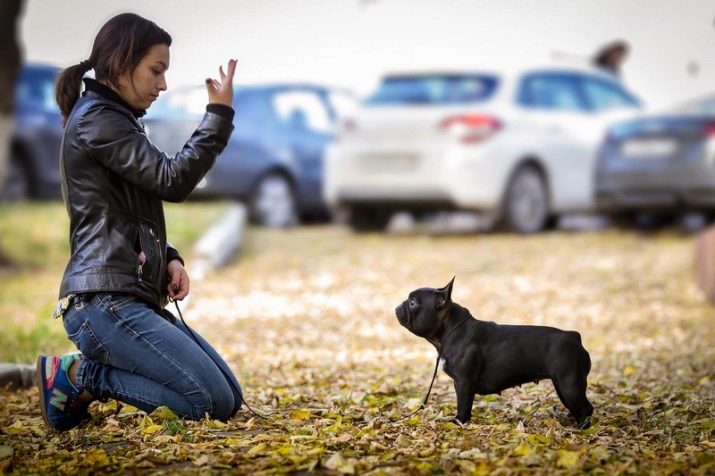
In this case, the punishment should not be too mild, since in this case the dog will not understand anything, but too harsh is not welcomed - measures of physical pressure in dealing with a bulldog are unacceptable, otherwise the hunted animal will begin to bite, scratch and spoil things.
Cynologists agree that between the carrot and the carrot in raising bulldogs, the decisive word should belong to the carrot. To do this, use a delicacy and praise. By the way, the treat should be changed from time to time, since the monotony loses its value for the boule. You need to praise the dogs in a calm voice, always accompanying them with stroking on the back.When the bulldogs are 4 months old, you can start training them - usually the animal is given the most standard commands.
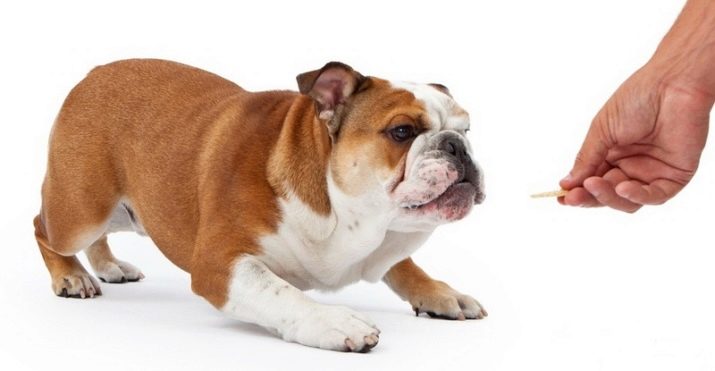
Reviews
In general, the reviews of the breeders about the bulldogs are the most positive. Unlike their ancient ancestors, these modern representatives of the breed do not show aggression, they demonstrate love and devotion to the owner and his family members, they can be left with children, in addition, bulldogs get along well with other pets. The owners of these dogs are very pleased with the simple care that comes down to the most standard procedures. - combing, clipping, trimming ears and eyes. Despite the physical strength and power, these animals cannot be called active in any way - they are ready to doze off for days on end, pets tolerate loneliness very well, so the breed is suitable even for busy people who are rarely at home.
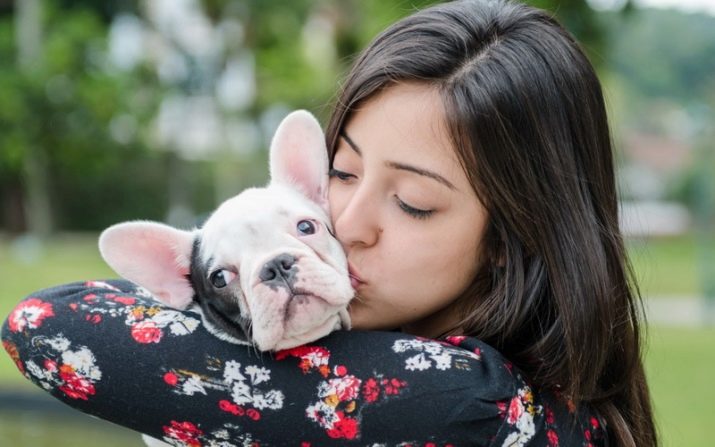
For the characteristics of the Bulldog breed, see the following video.

































